A standard 1979 half dollar is worth $0.60-$0.75 in circulated condition, but uncirculated versions can reach up to $315. Coins from Philadelphia (no mint mark), Denver (“D”), and San Francisco (“S”) share similar base values. However, error coins significantly increase worth. Notable errors include the 1979-S “Filled S” (blurry mint mark from worn punch), 1979-S “Clear S” (sharper mint mark, more valuable), 1979-P wrong planchet errors (struck on incorrect stock), and 1979-D “Large Date” variants. Condition and error types are key factors determining final value for collectors.
That Kennedy half dollar from 1979 sitting in your drawer might be worth more than fifty cents. While most circulated examples trade for around face value to $0.75, specific mint mark varieties and production errors can push values dramatically higher. Uncirculated specimens in pristine condition have sold for $315, and certain error varieties command premiums among specialized collectors who hunt for these manufacturing quirks.
Understanding the Three Main Mint Varieties
The United States produced 1979 half dollars at three facilities, each leaving its distinct mark on the coins. Philadelphia coins carry no mint mark, Denver pieces display a “D,” and San Francisco specimens show an “S.” The mint mark appears on the obverse (heads side) below Kennedy’s portrait, just above the date.
Philadelphia struck 68,312,000 half dollars for circulation in 1979, making these no-mint-mark coins the most common variety. Denver produced 15,815,422 pieces, representing roughly 23% of Philadelphia’s output. San Francisco exclusively manufactured proof coins for collectors, with a mintage of 3,677,175 pieces sold in special packaging.
1979 Half Dollar Value by Mint Mark and Grade:
| Mint Mark | Grade | Value Range |
|---|---|---|
| None (P) | G-4 to F-12 | $0.50 – $0.60 |
| None (P) | AU-50 | $0.75 – $1.25 |
| None (P) | MS-63 | $2.50 – $4.00 |
| None (P) | MS-65 | $18 – $25 |
| None (P) | MS-67 | $280 – $315 |
| D | G-4 to F-12 | $0.50 – $0.60 |
| D | AU-50 | $0.75 – $1.25 |
| D | MS-63 | $2.75 – $4.50 |
| D | MS-65 | $22 – $28 |
| D | MS-67 | $290 – $315 |
| S (Proof) | PR-65 | $3.50 – $5.00 |
| S (Proof) | PR-68 | $12 – $18 |
| S (Proof) | PR-70 | $45 – $65 |
The substantial jump in value occurs at the MS-65 level and higher, where coin preservation becomes exceptional. NGC population reports show only 247 examples of the Philadelphia variety grading MS-67 or higher as of 2023, explaining the $280+ premium.
The Filled S Versus Clear S Proof Controversy
San Francisco mint workers faced a production challenge in early 1979. The punch used to apply the “S” mint mark had worn down significantly from repeated use. When struck into the proof dies, this deteriorated punch created a “Filled S” appearance where the curved interior portions of the letter appeared clogged or blob-like. Under magnification, the mint mark resembles a thick, almost illegible blob rather than a crisp letter.
The United States Mint replaced the worn punch midway through 1979 production with a newly manufactured tool featuring sharper details. This created the “Clear S” variety, where the mint mark displays well-defined curves and clean interior spaces. Professional Coin Grading Service (PCGS) and NGC recognize these as distinct varieties, assigning separate catalog numbers.
Collectors can distinguish between the two by examining the upper and lower curves of the “S.” The Filled S shows thick, blobby connections where curves should separate. The Clear S displays clean spacing throughout. A 10x magnifying loupe reveals the difference immediately.
Filled S Versus Clear S Values:
| Variety | PR-65 | PR-68 | PR-70 |
|---|---|---|---|
| Filled S | $3.50 – $4.50 | $10 – $14 | $38 – $48 |
| Clear S | $4.75 – $6.00 | $15 – $22 | $55 – $75 |
Heritage Auctions sold a 1979-S Clear S graded PR-70 Deep Cameo for $72 in January 2023. The same grade in Filled S variety brought $45 in the same auction session. The 60% premium reflects collector preference for the sharper, more visually appealing Clear S version.
Wrong Planchet Strikes: When Half Dollars Meet Quarter Blanks
Mint errors occur when quality control fails, and wrong planchet strikes represent some of the most dramatic mistakes. A planchet is the blank metal disc before striking. In 1979, several Kennedy half dollars were accidentally struck on planchets intended for different denominations.
The most documented variety is the 1979-P half dollar struck on a quarter planchet. These weigh approximately 5.67 grams instead of the correct 11.34 grams for copper-nickel clad half dollars. The smaller planchet diameter (24.3mm versus 30.6mm) means the design doesn’t fully strike, leaving portions of Kennedy’s portrait and the reverse eagle incomplete.
Stack’s Bowers Galleries authenticated a 1979-P half dollar on quarter planchet that sold for $1,840 in August 2022. The coin showed clear evidence of the correct half dollar dies striking a significantly undersized planchet, with approximately 20% of the design missing at the rim.
Other wrong planchet errors include 1979 half dollars struck on:
- One-dollar Susan B. Anthony planchets (26.5mm, 8.1 grams)
- Foreign planchets from production runs for other countries
- Experimental composition planchets
These errors remain exceptionally rare. The United States Mint’s multi-stage quality control typically catches wrong planchet errors before coins enter circulation. Fewer than fifteen authenticated examples of 1979 wrong planchet half dollars exist across all major grading services.
Denver Mint Production Variations and Doubled Dies
The Denver facility produced its 15.8 million half dollars using multiple die pairs throughout 1979. Die pairs wear down from striking pressure, requiring periodic replacement. Different die preparations created subtle variations that specialists collect.
Some 1979-D half dollars display minor doubling on obverse elements, particularly on the inscription “IN GOD WE TRUST” and the date numerals. True doubled dies occur when the die receives multiple impressions from the hub during manufacturing, with slight misalignment between strikes. This creates a shadow or duplicate outline on design elements.
Examining the “1979” date with magnification reveals the doubling most clearly. Authentic doubled dies show separation in the vertical strokes of the “1” and rounded portions of the “9.” Mechanical doubling from loose dies during striking creates a different appearance—flat, shelf-like extensions rather than complete duplicate outlines.
NGC and PCGS have certified approximately thirty-five 1979-D doubled die obverse varieties as of late 2023. Values depend on doubling strength and overall grade. A 1979-D DDO in MS-64 condition sold through GreatCollections for $178 in November 2023. Weaker doubling examples in lower grades trade for $25-$45.
Denver coins also show die cracks, cuds (raised lumps from broken dies), and other production abnormalities. A significant die break affecting 15% or more of the coin’s surface adds $8-$20 to base value in circulated grades, with larger premiums for uncirculated specimens.
Identifying High-Grade Uncirculated Specimens Worth Hundreds
The difference between a $1 half dollar and a $300 half dollar comes down to preservation quality. Grading services evaluate coins on a 70-point numerical scale, where MS-60 represents the minimum uncirculated grade and MS-70 denotes absolute perfection.
Kennedy half dollars from 1979 face particular challenges reaching high grades. The large, exposed surfaces on both obverse and reverse readily show contact marks from other coins. The copper-nickel clad composition scratches more easily than pure silver. Even coins pulled directly from mint sets often display minor bag marks from jostling during packaging.
MS-67 examples combine several critical qualities:
- Complete mint luster with no disruption or dullness
- Fewer than two microscopic contact marks visible at 5x magnification
- Centered strike showing full design detail on Kennedy’s hair and the eagle’s feathers
- Original surfaces without cleaning, polishing, or environmental damage
- Strong eye appeal with attractive toning (if present) or brilliant white surfaces
Population reports reveal scarcity at top grades. PCGS has graded 1,847 examples of 1979-P half dollars in MS-65 condition but only 89 in MS-67. That 95% reduction in population drives the dramatic price increase. The finest certified example, a single MS-68 specimen, last traded publicly for $1,180 in a 2021 Heritage Auctions sale.
Collectors seeking these premium grades should purchase only certified coins in tamper-evident holders from NGC or PCGS. Raw (uncertified) coins claiming MS-67 grades often disappoint when submitted for professional authentication, typically returning MS-63 to MS-65 grades.
Proof Coins: What Sets San Francisco Strikes Apart
San Francisco concentrated exclusively on proof production in 1979, striking coins with specially prepared dies and planchets. The proof manufacturing process differs fundamentally from regular circulation strikes, creating coins intended for collectors rather than commerce.
Proof production begins with hand-selected planchets receiving multiple washings and polishing. Dies undergo chrome plating and polishing to create mirror-like fields (background surfaces). Each coin receives multiple strikes from the press at reduced speed, allowing design details to fill completely. The result shows frosted, sculptural design elements contrasting against deeply reflective fields—the “cameo” effect collectors prize.
Deep Cameo designation from PCGS (or Ultra Cameo from NGC) indicates maximum contrast between frosted devices and mirrored fields. Not all proof coins achieve this designation. Early strikes from fresh dies show the strongest cameo effect. As dies strike thousands of coins, the frosted surfaces gradually polish, reducing contrast.
1979-S Proof Values by Cameo Designation:
| Grade | Standard Proof | Cameo | Deep Cameo |
|---|---|---|---|
| PR-65 | $3.50 | $4.25 | $5.00 |
| PR-68 | $12 | $16 | $20 |
| PR-69 | $22 | $32 | $42 |
| PR-70 | $45 | $60 | $75 |
The PR-70 grade represents absolute perfection—no flaws visible even at 5x magnification. As of December 2023, PCGS had certified only 312 examples of 1979-S half dollars as PR-70 Deep Cameo from the 3.67 million proof mintage. That 0.0085% certification rate explains premium pricing.
What Your 1979 Half Dollar Is Really Worth
Start by identifying the mint mark location on the obverse below Kennedy’s neck. No mark indicates Philadelphia, “D” means Denver, and “S” confirms San Francisco. Use a magnifying glass or smartphone macro lens to check for the Filled S versus Clear S variety on San Francisco proofs.
Circulated coins showing wear on Kennedy’s cheekbone and the eagle’s breast feathers typically grade Good to Fine, worth $0.50-$0.75 regardless of mint mark. These trade primarily for their copper-nickel content value rather than numismatic premiums.
Coins showing full mint luster without wear enter the uncirculated range starting at MS-60. Count visible contact marks under magnification. Fewer than five small marks suggests MS-63 ($2.50-$4.50). Two or fewer marks indicates MS-65 territory ($18-$28). Examine the strike quality—weak strikes showing incomplete feather details on the eagle reduce grades and values.
Wrong planchet errors and significant doubled dies require professional authentication. Many coins showing apparent doubling actually display mechanical doubling or post-strike damage rather than true mint errors. Submit potentially valuable errors to PCGS or NGC for verification before assuming premium values.
Check sold prices on auction sites like Heritage, Stack’s Bowers, and GreatCollections for comparable certified examples. Raw coin values typically run 30-50% below certified examples at equivalent grades due to buyer uncertainty about authenticity and grade accuracy.
The market for 1979 half dollars remains stable with steady collector demand for high-grade examples and verified errors. While most pieces trade near face value, that uncirculated roll from 1979 in your collection might contain that one MS-67 specimen worth hundreds of dollars—making a careful examination worthwhile.
You may be interested:
- 1859 Indian Head Penny Coin Value Complete Errors List And No Mint Mark Worth Guide For Collectors
- 1911 V Nickel Coin Value Guide Complete Errors List And No Mint Mark Worth Today
- 1902 Dime Coin Value Complete Errors List With O S And No Mint Mark Worth Guide
- 1788 Quarter Coin Value Complete Guide Errors List And D S P Mint Mark Worth Revealed
- 1776 To 1976 Bicentennial Half Dollar Coin Value Complete Errors List And What Your D S And No Mint Mark Coins Are Actually Worth
- 1990 Penny Coin Value Errors List How D S And No Mint Mark Pennies Are Worth Thousands Of Dollars

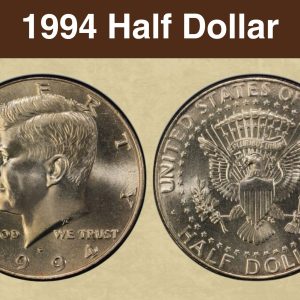
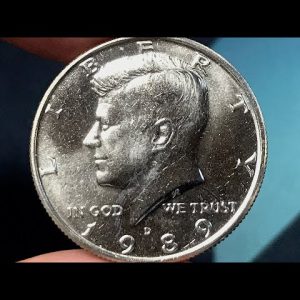
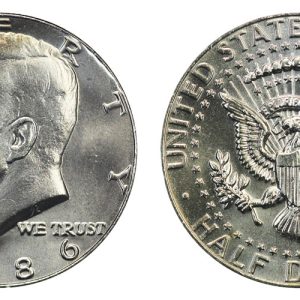
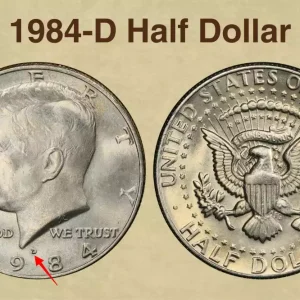
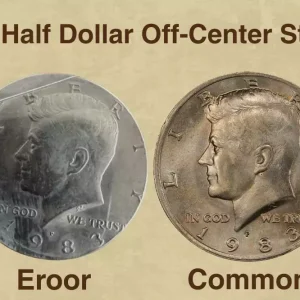
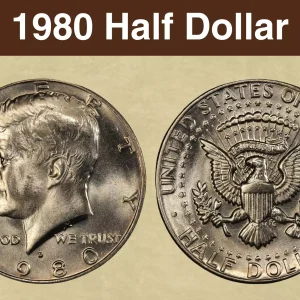
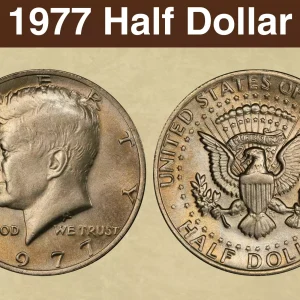
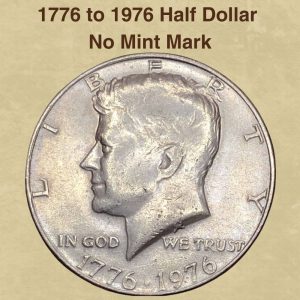
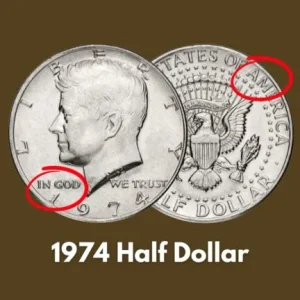
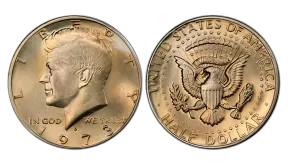
What is the error on the 1979 half dollar?
Common 1979 half dollar errors include doubled dies (both obverse and reverse), off-center strikes, broad strikings where the coin’s rim is affected, and struck-through errors like a gash or a “halo” effect around the design. Rarer errors, such as being struck on a different planchet (like a Susan B. Anthony dollar planchet) can also occur, significantly increasing a coin’s value.
Does a 1979 Kennedy Half Dollar have any value?
A 1979 Kennedy half dollar’s value depends on its condition and mintmark. Circulated examples are typically worth around face value to less than a dollar, but uncirculated and proof versions can be worth more, ranging from a few dollars to over $100 for rare errors or high-grade examples.
What errors to look for on Kennedy half dollars?
Look for common Kennedy half dollar errors such as doubled dies, off-center strikes, die breaks, and filled or missing mint marks. Specific rare errors include the 1964 “Accented Hair” variety, the 1971-D and 1977-D struck on 40% silver planchets, and 1968-S proof coins with an inverted mint mark. For recent coins, look for 2024 errors like the dropped star or die clashes.
How do I know if my 1979 Susan B. Anthony D. coin is valuable?
And the rim of the coin. The rim and the date are almost touching on the wide rim variety. The wide rim variety adds a nice premium to your coin. In grade 40 the wide rim dollar is worth about $12.